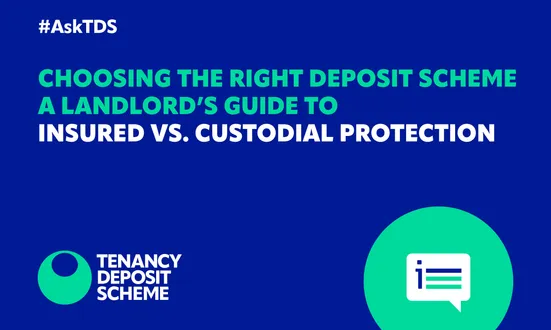In this week’s #ASKTDS, we were approached with a question about a perpetually burning topic: Pets! Where a tenant who has been renting without a pet asked whether they can introduce one to the property?
Here the Tenancy Deposit Scheme (TDS) looks at the proposed government changes to make pet ownership assessable to tenants and what you can do now to help avoid deposit disputes at the end of tenancy.
Proposed changes to the PRS
According to The Fairer Renting White paper update, the UK Government has proposed some important modifications to the PRS. One of the significant changes is to make pet ownership more accessible to tenants, after just 7 per cent of properties stated they were ‘pet friendly’, according to research conducted by the Ministry of Housing, Communities & Local Government.
The legislation change means that the UK Government would expect landlords not to reject a tenant’s request to keep a pet unfairly, or that tenants be required to purchase pet insurance as one of the permitted tenant payments if the legislation passes.
Can I refuse the request to allow pets in my rental property?
If your tenant has seen the potential update, it may have inspired them to request a pet in the property. Whilst these changes have not been agreed upon yet, the Model Tenancy Agreement (recommended by the Government) states that landlords can no longer issue blanket bans on pets.
Instead, if landlords have an objection to allowing a pet, the landlord must raise it within 28 days in writing, explaining why the pet would not be accepted. For example, if the property is too small or lacks outside space.
What can I do to protect my property when agreeing to rent with a pet?
1. Find out about the pet
An animal companion is a wonderful addition to any household, but it can be hard to find the right fit. Before agreeing to allow the pet, be sure to ask the tenant as much as you can regarding the breed, whether it is hypoallergenic, has been de-wormed, de-fleaed, neutered and trained.
2. Pet references
If the tenant has previous experience with the animal, seek a reference on how it behaved in their previous home.
3. Include a pet clause in your tenancy agreement.
A pet clause should include the tenant’s responsibilities whilst keeping the pet at the property, such as specific cleaning demands, pest control, and increased garden maintenance. Remember to include specific information regarding the number and type of animals to avoid deposit disputes at the end of tenancy.
Pets in properties free guide
Find out everything you need to know about pets in rented properties in our free guide, starting from stained carpets to damaged lawns. You can ensure that tenancy agreements, check-in/out reports, and inventory reports include specific points by being aware of the hazards related to pets in properties.
The guide includes essential tips about pet clause best practices, which may help prevent deposit disputes at the end of the tenancy.
Landlords and agents have many questions about pets in properties, and we have answered them in this guide, such as:
• Can I charge a higher rent to a pet-owning tenant?
• Is a breach of the pet clause enough to support a deposit deduction for damage?
• What should I do if my tenant has an animal without permission?
Not with TDS?
It’s easy to join us. Protect your deposit with us today or find out how simple it is to switch!



